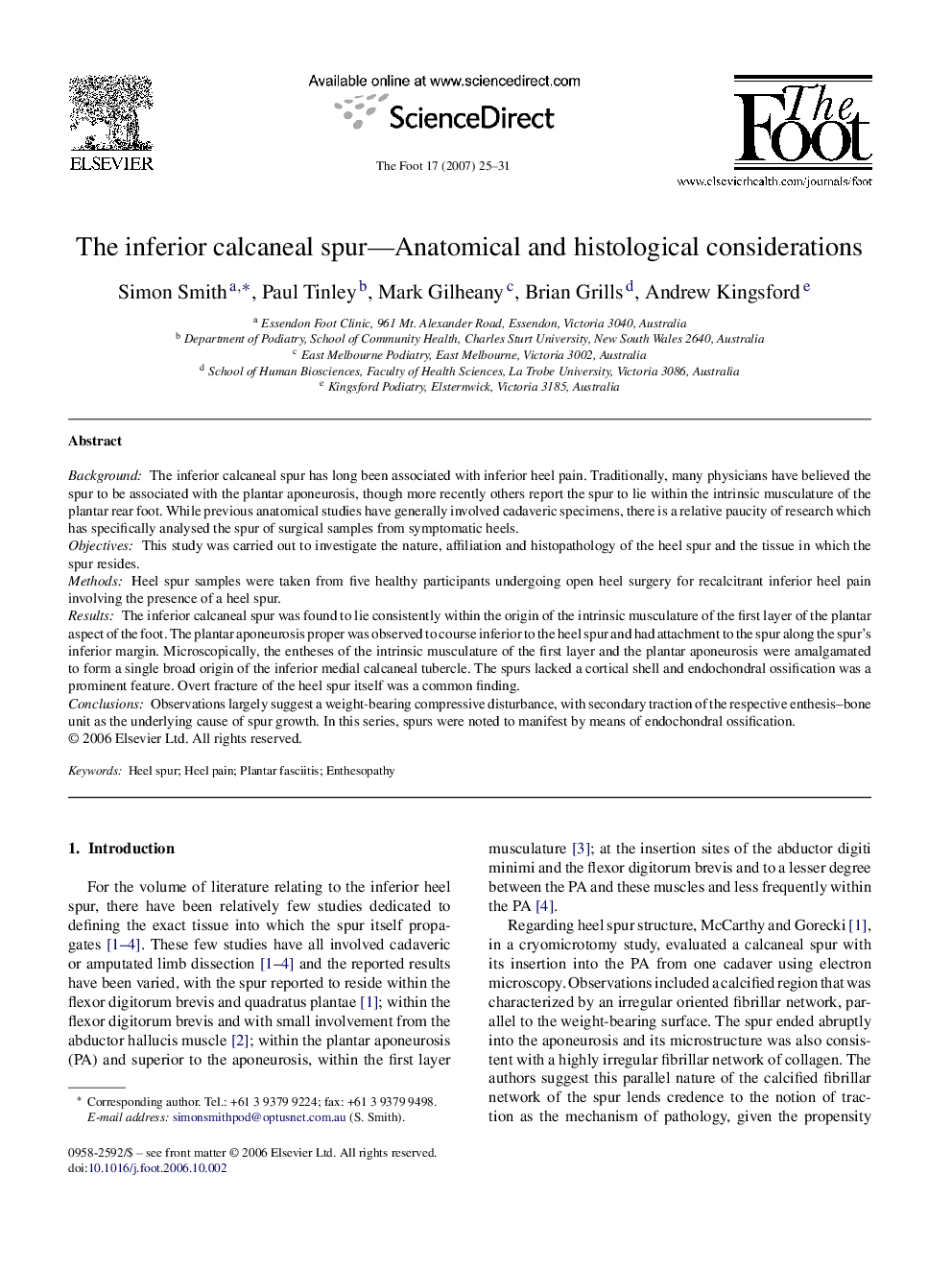| Article ID | Journal | Published Year | Pages | File Type |
|---|---|---|---|---|
| 2713634 | The Foot | 2007 | 7 Pages |
BackgroundThe inferior calcaneal spur has long been associated with inferior heel pain. Traditionally, many physicians have believed the spur to be associated with the plantar aponeurosis, though more recently others report the spur to lie within the intrinsic musculature of the plantar rear foot. While previous anatomical studies have generally involved cadaveric specimens, there is a relative paucity of research which has specifically analysed the spur of surgical samples from symptomatic heels.ObjectivesThis study was carried out to investigate the nature, affiliation and histopathology of the heel spur and the tissue in which the spur resides.MethodsHeel spur samples were taken from five healthy participants undergoing open heel surgery for recalcitrant inferior heel pain involving the presence of a heel spur.ResultsThe inferior calcaneal spur was found to lie consistently within the origin of the intrinsic musculature of the first layer of the plantar aspect of the foot. The plantar aponeurosis proper was observed to course inferior to the heel spur and had attachment to the spur along the spur's inferior margin. Microscopically, the entheses of the intrinsic musculature of the first layer and the plantar aponeurosis were amalgamated to form a single broad origin of the inferior medial calcaneal tubercle. The spurs lacked a cortical shell and endochondral ossification was a prominent feature. Overt fracture of the heel spur itself was a common finding.ConclusionsObservations largely suggest a weight-bearing compressive disturbance, with secondary traction of the respective enthesis–bone unit as the underlying cause of spur growth. In this series, spurs were noted to manifest by means of endochondral ossification.
